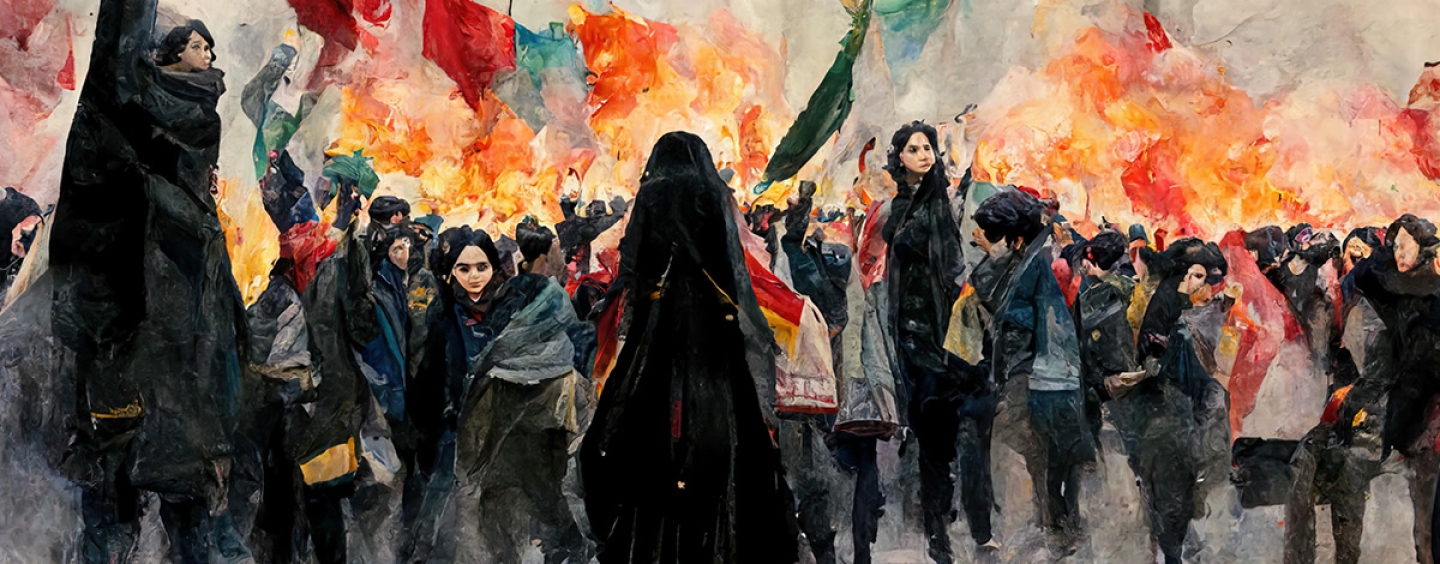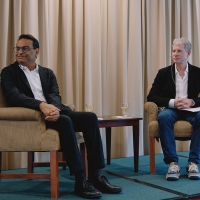Director of SF State’s Center for Iranian Diaspora Studies shares four ways to support Iran protestors

Professor Persis Karim says it’s critical to speak up, learn more and support human rights organizations and female students
The death of a young woman while in the custody of Iran’s morality police last month has sparked some of the largest worldwide protests against the country’s government ever.
San Francisco State University Professor Persis Karim serves as the Neda Nobari Distinguished Chair and director of the University’s Center for Iranian Diaspora Studies. She continues to monitor developments closely and take action by commenting in the media, attending rallies in the Bay Area and organizing an SF State teach-in. SF State News asked her to share her insights into the protests — and what people can do to support them.
From a historical standpoint, what makes the killing of Mahsa Amini even more tragic and significant in the struggle for women’s rights and human rights?
Mahsa Jina Amini, a 22-year-old Kurdish woman from one of Iran’s poorer provinces where state violence is regularly meted out against the Kurdish population, is indeed tragic for her community and family (she was visiting Tehran with her brother at the time of getting arrested), but her death has become the spark that has lit a fire for so many other grievances against the Islamic Republic.
Her death represents the most extreme form of abuse and harassment of Iran’s morality police that regularly patrol Iran’s streets and surveille women and men for appropriate dress and behavior. But it comes on the heels of a much longer struggle (43 years under the Islamic Republic and also under the Shah) by women to challenge Iran’s discriminatory laws, social norms and culture that treats women as second-class citizens.
Amini represents a young generation of women, half the population, and among Iran’s majority of citizens who are under the age of 30 who face daily humiliation and abuse for wanting to express themselves, have bodily autonomy and determine their future free from the limitations that the patriarchal laws of the Islamic Republic put on them.
But we also need to draw attention to the attacks on women’s rights in this country — the recent decision to strike down Roe v. Wade is a lesson to us — that religion and politics can and will interfere in women’s right to their autonomy.
The protests are driven by women and girls and their outrage at a system many call gender apartheid. My cousin, who resides in Iran and served time in prison for protesting the mandatory hijab in the 1980s, wrote to me in a WhatApp text on Saturday: “We tried every other possible way than these protests. We tried voting, even when there were very few acceptable candidates — and the next time, they let even fewer people be nominated. We tried reforms. Corruption is a huge barrier to any results. We’ve tried dialogues. … They do not listen. They think that this country is theirs. They have imprisoned us. This land belongs to the people who live in it.”
What can people do to support the protests in Iran?
1. Share news from Iran
We should call on experts — academics and activists — who have lived in Iran to offer their analysis. [They] should be asked to write opinion pieces and contribute meaningfully to local and national press; we can also hold teach-ins and other forms of educational events.
The silence is just painful, and though I understand that there are no journalists on the ground, there are ways to cover this that don’t only rely on footage of the crackdown on protests. We should be talking about the impact on women and girls, and also in terms of how people are resilient. We need to keep reposting stories online, and also include these hashtags: #WomenLifeFreedom #MahsaAmini.
2. Attend a protest or teach-in
Staying involved in protests and taking to the streets, the bridges and the candlelight vigils is an ongoing way to make your opinion known. Teach-ins, film screenings and other educational events serve as community meeting points to continue involvement and sharing of news and knowledge.
3. Support human rights organizations
The best way to help is to donate money and support to human rights organizations, such as Amnesty International, Human Rights Watch and the Center for Human Rights in Iran.
An Associated Press tally shows there have been at least 1,900 arrests connected to the protests. As of Sept. 24, an Oslo, Norway-based group called Iran Human Rights estimates at least 154 people have been killed. Without a reliable government source of information and limited journalism allowed in the country, human rights organizations serve an important role of documentation.
4. Pressure universities to support academics
Given the recent attacks at Sharif University, and the fact that the majority of those protesting are high school and university students, we need to bring attention to students, particularly female students.
It’s very difficult and very expensive for young people to … get a visa to come here [to the U.S.]. I think the ways universities can play a role is to waive the admission fee and to work with Scholars at Risk to have a plan. We did not do a good job assisting Afghan women or students; we must do better.



